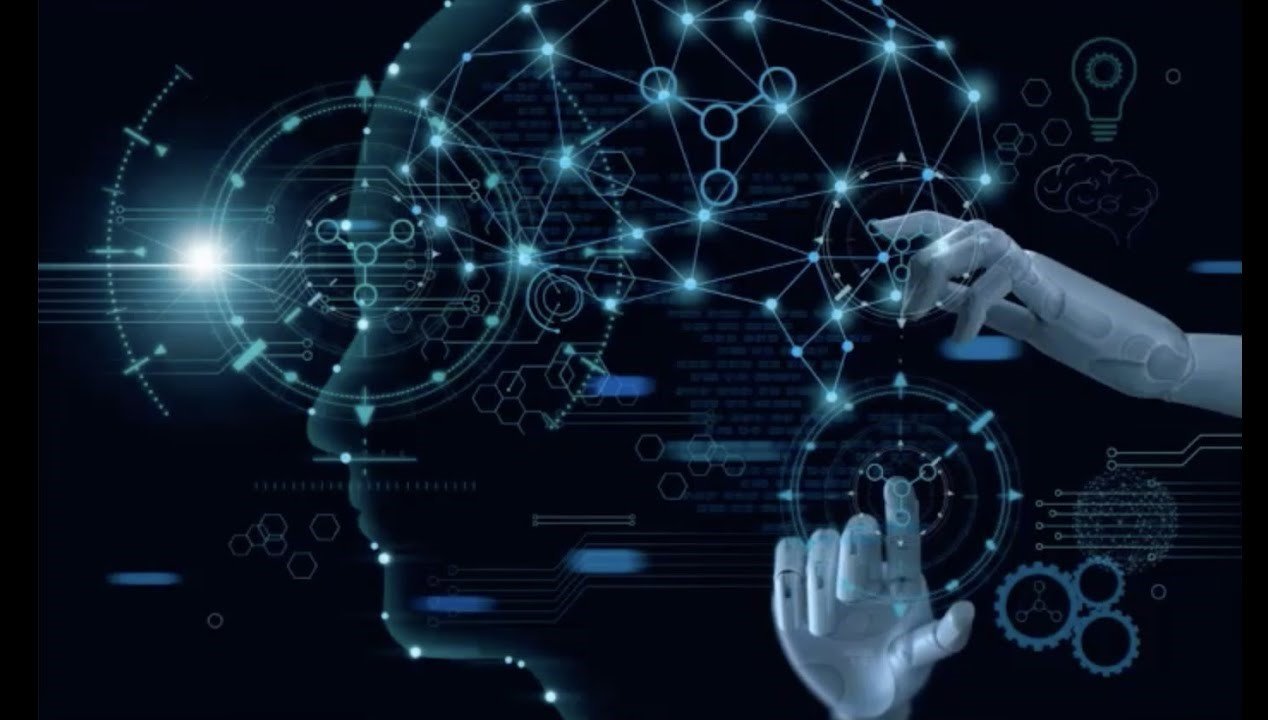How to Adopt Neurotechnology for Brain-Computer Interfaces in 2023

In a world where technological advancements continue to reshape the boundaries of human capabilities, neurotechnology has emerged as a groundbreaking field with the potential to revolutionize our interaction with machines. Brain-computer interfaces (BCIs), a subset of neurotechnology, offer a direct link between the human brain and external devices, opening up possibilities that were once confined to the realm of science fiction. In this article, we will delve into the intricacies of adopting neurotechnology for BCIs in 2023, exploring its applications, challenges, and the path forward.
The fusion of neuroscience and technology has led to the development of neurotechnology, which holds immense potential for enhancing human lives. At the forefront of this revolution are brain-computer interfaces, paving the way for direct communication between the brain and external devices.
Understanding Neurotechnology and BCIs
Neurotechnology involves the use of technology to understand, interact with, and manipulate the brain’s functions. BCIs, a subset of neurotechnology, establish a direct line of communication between the brain and computers or devices, enabling control and data exchange through neural signals.
Current State of Neurotechnology

Advancements in Neural Imaging
Cutting-edge neural imaging techniques, such as functional MRI and magnetoencephalography, provide unprecedented insights into brain activity. This imaging prowess is vital for decoding brain signals.
Neural Signal Processing
Sophisticated algorithms process neural signals from BCIs, translating them into meaningful commands. This bridging of neuroscience and computer science is essential for accurate communication.
Applications of BCIs
Medical Applications
BCIs are transforming medical treatments. Paralyzed individuals can regain mobility, and those with neurodegenerative diseases gain improved life quality through prosthetics controlled by their thoughts.
Assistive Communication
BCIs enable individuals with speech impairments to communicate via text or speech synthesis systems. This has profound implications for inclusivity and autonomy.
Neurogaming and Entertainment
The gaming industry adopts BCIs to create immersive experiences. Gamers control actions through thoughts, adding a new dimension to interactive entertainment.
Challenges in Neurotechnology Adoption
Ethical Considerations
The ethical use of BCIs involves issues of cognitive liberty, consent, and potential misuse. Striking a balance between innovation and responsible use is paramount.
Data Security and Privacy
As BCIs gather sensitive neural data, safeguarding user privacy and preventing unauthorized access are significant challenges that require robust solutions.
Technical Limitations
Current BCIs face limitations like signal accuracy and invasiveness. Advancements are necessary to ensure seamless integration and real-time responsiveness.
Recent Innovations in BCI Research
Neural Plasticity and Adaptability
Research reveals the brain’s remarkable ability to adapt to BCIs. This adaptability opens avenues for personalized and more effective neurotechnology solutions.
Non-Invasive BCI Techniques
Developments in non-invasive BCIs, such as electroencephalography (EEG) caps, reduce the need for invasive procedures, making neurotechnology more accessible.
The Future of Neurotechnology and BCIs
Understanding Brain-Computer Interfaces
Brain-Computer Interfaces are sophisticated systems that bridge the gap between the human brain and computers. By leveraging neural signals, BCIs allow individuals to control devices, applications, and even prosthetics with their thoughts. This technology opens up a realm of possibilities, from assisting those with motor impairments to offering entirely new ways of immersive virtual experiences.
The Evolution of Neurotechnology
The journey towards functional BCIs has been marked by remarkable achievements. From early experiments involving basic control tasks to decoding more complex brain activities, researchers have made exponential progress. As our understanding of the brain’s intricacies deepens, so does our ability to create seamless interfaces.
Applications in Healthcare
Neurotechnology is poised to reshape the healthcare landscape. BCIs offer hope for individuals with spinal cord injuries, enabling them to regain mobility through robotic exoskeletons. Moreover, these interfaces hold potential in treating neurological disorders and providing insights into mental health conditions.
Enhancing Communication and Accessibility
Imagine communicating directly from your thoughts, transcending language barriers. BCIs could empower individuals who are non-verbal or have communication limitations to express themselves effortlessly. This technology could redefine accessibility for people with diverse needs.
Ethical Considerations and Privacy Concerns
While the prospects are exciting, ethical concerns accompany the rise of BCIs. Questions about data security, consent, and the potential for cognitive enhancement raise complex ethical dilemmas that society must address.
Neurotechnology in Education and Skill Augmentation

Education could take a quantum leap with neurotechnology. Imagine learning complex subjects at an accelerated pace or acquiring new skills through direct brain interfaces. This could democratize education, making knowledge acquisition more efficient and personalized.
Overcoming Technological Challenges
Creating reliable BCIs involves overcoming intricate technical challenges. Achieving high accuracy in decoding neural signals, ensuring device safety, and maintaining long-term viability are crucial aspects that researchers and engineers are tirelessly working on.
Predictions and Speculations
Predicting the future of BCIs is an exercise in both excitement and speculation. Some envision a world where BCIs are as commonplace as smartphones, seamlessly integrated into our daily routines. Others foresee a societal shift as humans embrace cognitive augmentation.
Challenges to Mainstream Adoption
Despite the immense potential, several obstacles stand in the way of mainstream BCI adoption. These include regulatory hurdles, public acceptance, and the need for extensive research to validate safety and efficacy.
The Collaborative Landscape of Neurotech Companies
The development of BCIs is not the work of isolated researchers; it’s a collaborative effort involving tech giants, startups, and research institutions. This convergence of expertise accelerates innovation and paves the way for a more interconnected world.
Merging Human and Artificial Intelligence
The symbiotic relationship between humans and AI will deepen through BCIs. Information exchange will be seamless, augmenting cognitive abilities and problem-solving.
Enhanced Learning and Skill Acquisition
BCIs can accelerate learning by directly integrating information into the brain. Imagine acquiring new languages or skills effortlessly.
Steps to Embrace Neurotechnology for BCIs
Education and Public Awareness
Spreading accurate information about neurotechnology can dispel myths and misconceptions, fostering public acceptance and collaboration.
Collaboration Across Disciplines
Neurotechnology is multidisciplinary. Collaboration among neuroscientists, engineers, ethicists, and policymakers is crucial for responsible progress.
Regulatory Frameworks
Governments and international bodies need to establish ethical and safety standards to guide neurotechnology development, ensuring its positive impact.
Overcoming Societal and Ethical Concerns

Addressing Misconceptions
Educating the public about the reality of BCIs dismantles fears and fosters understanding, reducing resistance to adopting this transformative technology.
Ensuring Equitable Access
Efforts must be made to prevent neurotechnology from creating disparities. Equitable access should be a priority to avoid exacerbating existing inequalities.
Conclusion
The journey of adopting neurotechnology for BCIs in 2023 is one of incredible potential and complex challenges. As society navigates the uncharted waters of merging human cognition with machines, careful consideration of ethical, societal, and technical aspects will pave the way for a future where BCIs enhance lives while respecting individual rights and values.
Read more : How to Build and Use Quantum Computers for Everyday Tasks in 2023
FAQs
Are BCIs safe for long-term use?
BCIs undergo rigorous testing to ensure safety. Long-term effects are continuously studied.
Can anyone undergo BCI implantation?
BCIs have specific criteria, often related to medical conditions. Consultation with experts is crucial.
Will BCIs replace traditional learning methods?
BCIs will supplement learning but not necessarily replace traditional methods, emphasizing human-AI collaboration.
How affordable are BCIs?
Affordability is improving, but BCIs remain relatively costly due to the complexity of technology.
Is there a risk of brain hacking with BCIs?
Security measures are implemented to mitigate hacking risks, but like any technology, complete immunity is challenging.
Read more : How to Develop and Use Teleportation Technology in 2023







